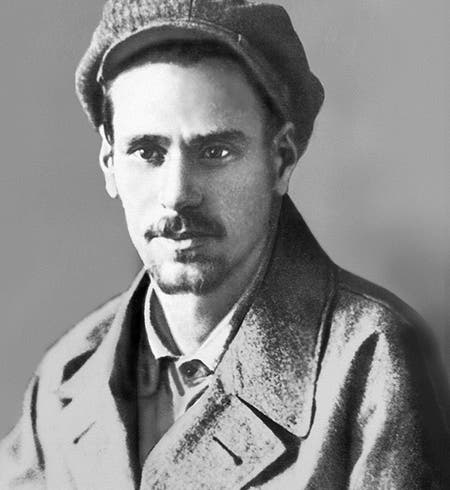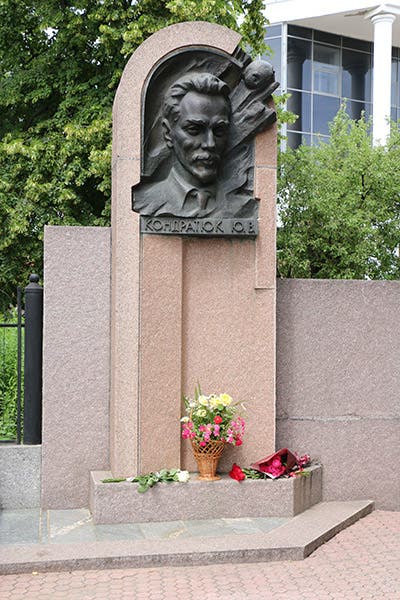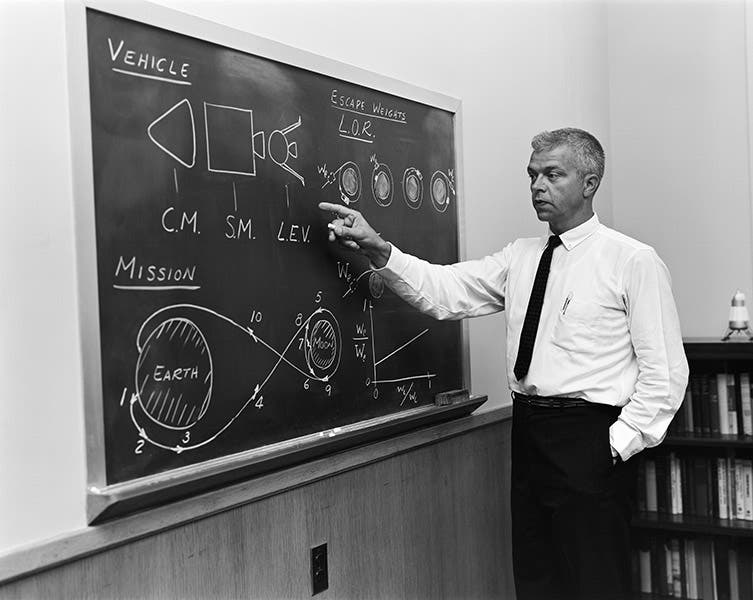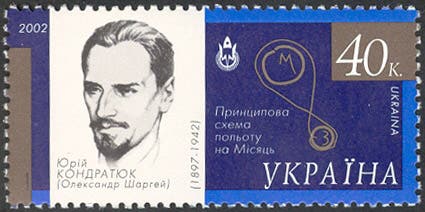Scientist of the Day - Yuri Kondratyuk
Yuri Vasilievich Kondratyuk, a Ukrainian and Soviet spaceflight pioneer, was born June 21, 1897. Actually, he was born Aleksandr Ignatyevich Shargei, but in 1917, he decided he had had enough of army life and deserted, and was forced to go into hiding for four years. The real Yuri Vasilievich Kondratyuk died that year, and Shargei adopted his identity, and kept it for the rest of his life. Kondratyuk, as he is universally referred to, was not untrained – he apparently did well in school before being drafted into the army – but all his musings and calculations about rockets and spaceflight was done in private, far outside academia or any other establishment. Between 1916 and 1929 he wrote quite a few manuscripts about rocket flight, and self-published one book, The Conquest of Interplanetary Space (1929). Many of his manuscripts survive. Kondratyuk made a number of proposals about spaceflight that were contrary to the thinking of his contemporaries, and which presaged ideas that would be adopted in the 1960s. He suggested, for example, that to be fuel-efficient, manned rockets into space should be modular, with a liftoff stage, an earth-orbit stage, and a much smaller probe to carry humans to wherever they were going. Most presciently, he suggested that for a landing on the Moon, the probe should not land directly, but should go into orbit around the Moon, with a smaller lander making the descent, then lifting off and rendezvousing with the orbiting module before returning home. Even though the rendezvous might be tricky, this was preferable to trying to carry enough fuel to lift a large rocket off the Moon.
All of this is praiseworthy indeed, and Kondratyuk deserves credit for anticipating problems in space travel that others were overlooking, and would overlook for decades more. However, nearly all of the recent literature on Kondratyuk goes much further and claims that the Apollo program relied on Kondratyuk's work in choosing Lunar Orbit Rendezvous (LOR) for the Apollo landings. It is asserted in quite a few articles and memorial notices that John Houbolt, the NASA engineer who campaigned successfully for LOR to the NASA administrators, got the idea from Kondratyuk's papers, which had been smuggled to the US after his death in World War II (we include a photo of Houbolt, mainly because the blackboard behind him has a diagram of LOR; third image below). And for these claims, I find no evidence at all. We have quite an excellent collection of books in the Library on both the U.S. and Soviet rocket programs of the 1960s, and in the early histories, those written in the 1970s and 1980s, Kondratyuk is not mentioned at all, not even in the indexes. It is only in accounts written in the last 20 years that his name appears as a spaceflight pioneer. My suspicion is that his rise to fame was politically inspired. I am guessing that someone in the Russian space bureaucracy, in the 1990s, set out to make Kondratyuk a space hero. We know that the technical university in Poltava, Ukraine, got instructions in 1997 from Moscow to change its name to Yuri Kondratyuk Poltava Polytechnic, and it did so. Two monuments (that I know of) were erected in Poltava, lauding Kondratyuk as a space pioneer (second image, above). A postage stamp was issued in his honor by Ukraine in 2002 (fourth image, below). NASA was told (I am conjecturing here) by someone in Russia that when Neil Armstrong visited the Soviet Union in 1970, he made a special trip to Kondratyuk’s house in Novosibirsk in Siberia, where Kondratyuk lived and worked in the 1920s and 1930s, and collected a handful of soil from the yard. I conjecture because there is no evidence of this in any literature before a NASA retrospective web posting of 2020. Note the wording: “Armstrong reportedly collected a handful of soil …” (emphasis added). Kondratyuk was inducted into the Space Hall of Fame in New Mexico in 2014, with a citation that contains all of the unsupported assertions mentioned above.
I am not trying to belittle Kondratyuk’s accomplishments here. His thinking about spaceflight problems in the 1920s is quite remarkable. But, unless more evidence is forthcoming, any assertion that he played an essential role in NASA’s decision to adopt LOR for the Apollo lunar flights is simply not warranted. Nor does he really belong in the pantheon of the true Russian or Soviet spaceflight pioneers, such as Konstantin Tsiolkovskii and Sergei Korolev.
I find it interesting that Google honored Kondratyuk with a Doodle on his birthday in 2012. But if you look down further on the linked page, you will see that the only country in the world that could see the Doodle was Ukraine.
Dr. William B. Ashworth, Jr., Consultant for the History of Science, Linda Hall Library and Associate Professor emeritus, Department of History, University of Missouri-Kansas City. Comments or corrections are welcome; please direct to ashworthw@umkc.edu.









